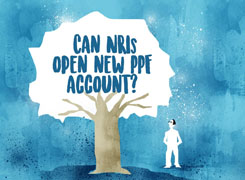Hi Vivek, my question is around retirement saving taxation and if one should invest in NPS based on the same. So like anyone with Basic of 41L annual, already has EPF of 5.9L. NPS at 14% means 6.9L, and so the total retirement contribution = 12.8L annually. So should NPS be considered? If yes how much annually?
Ans: At a basic annual salary of Rs 41 lakh, your retirement contributions through EPF and the National Pension System (NPS) are substantial. The current Rs 5.9 lakh from EPF and Rs 6.9 lakh from NPS (at 14% employer contribution) amount to Rs 12.8 lakh annually. Now, the critical question arises: should you further invest in NPS? Let’s evaluate this in detail.
Understanding Your Current Contributions
1. EPF Contributions
The Employees' Provident Fund (EPF) provides a safe and relatively high-interest-bearing retirement savings option. Your EPF contribution of Rs 5.9 lakh annually is a good start toward securing your retirement.
2. NPS Contributions at 14%
The employer contribution to NPS at 14% results in an additional Rs 6.9 lakh towards your retirement savings. NPS, being a market-linked investment, has the potential to grow at a higher rate than EPF, depending on the asset allocation and fund performance.
3. Total Retirement Contribution
With Rs 12.8 lakh already allocated annually, you have a substantial amount being set aside for your retirement. However, you might still want to consider whether this will be enough to meet your long-term goals, factoring in inflation and your future expenses.
Should You Invest More in NPS?
1. Tax Benefits of NPS
NPS provides attractive tax benefits under Section 80CCD(1B), where you can claim an additional Rs 50,000 tax deduction. This is over and above the Rs 1.5 lakh allowed under Section 80C. However, since NPS withdrawals are partially taxed, you need to consider the tax impact on maturity. At retirement, 60% of the NPS corpus is tax-free, while the remaining 40% must be used to purchase an annuity, which is taxable as per your slab.
2. Balancing Tax Savings with Liquidity
While NPS offers tax savings during the accumulation phase, the lack of liquidity and the mandatory annuitisation on retirement limit your control over the funds. If liquidity during retirement is important to you, you may want to reconsider how much more to invest in NPS.
Diversifying Beyond NPS
1. Equity and Debt Mutual Funds
If you are looking for more flexibility and control over your investments, mutual funds offer a better alternative. With a wide range of options in equity, hybrid, and debt funds, you can align your portfolio with your risk appetite. Unlike NPS, mutual funds provide easier access to your funds, should the need arise before retirement.
2. Benefits of Actively Managed Mutual Funds
By investing through regular mutual funds with the guidance of a Certified Financial Planner (CFP), you benefit from active fund management. This allows you to maximise your returns while minimising risks, unlike passive investments such as index funds that lack the flexibility to adjust to market conditions.
Limitations of NPS
1. Taxation at Maturity
As mentioned earlier, while NPS contributions provide tax relief during the accumulation phase, the maturity proceeds are partially taxed. The 40% annuitisation is a significant limitation, as it locks in your funds and subjects the annuity income to your regular tax slab.
2. Lack of Liquidity
NPS does not provide the same level of liquidity as mutual funds. Once invested, your money is locked in until retirement, with only limited withdrawals allowed under specific circumstances like medical emergencies or home purchase.
How Much to Invest Annually?
1. Additional NPS Contributions
If you decide to invest more in NPS, you can contribute an additional Rs 50,000 annually to avail yourself of the tax benefit under Section 80CCD(1B). However, whether to invest more than this amount depends on your overall retirement strategy and liquidity requirements.
2. Diversification Strategy
Instead of increasing your NPS contribution beyond Rs 50,000, you might consider diversifying your retirement savings across different asset classes. A well-balanced portfolio with a mix of equity, debt, and hybrid funds, along with your existing EPF and NPS, will help you achieve your financial goals while managing risks effectively.
Taxation and Withdrawal Planning
1. Managing Taxation Efficiently
Given the tax implications of NPS withdrawals, it is crucial to plan your post-retirement cash flow efficiently. You can stagger your withdrawals from NPS to reduce the overall tax burden, while ensuring that you meet your retirement income needs. Additionally, investments in mutual funds can be structured in a way that minimises the tax impact, especially with the new rules for long-term and short-term capital gains taxation.
2. Tax on Equity and Debt Mutual Funds
When selling equity mutual funds, long-term capital gains (LTCG) above Rs 1.25 lakh are taxed at 12.5%, while short-term capital gains (STCG) are taxed at 20%. For debt mutual funds, LTCG and STCG are taxed according to your income tax slab. By investing in these funds, you can create a tax-efficient portfolio that balances growth with tax savings.
Long-Term Wealth Creation
1. Power of Compounding
The earlier you start investing, the more you can benefit from the power of compounding. Whether it’s NPS or mutual funds, long-term investments have the potential to grow exponentially over time. A combination of NPS, EPF, and mutual funds will ensure that you have a diversified retirement corpus.
2. Regular Portfolio Review
It’s important to review your portfolio regularly, especially as you near retirement. Your financial situation, risk tolerance, and market conditions will evolve over time. By working with a Certified Financial Planner (CFP), you can ensure that your retirement plan remains on track.
Final Insights
To summarise, NPS offers significant tax benefits and is a solid retirement option, but it comes with limitations like taxation at maturity and mandatory annuitisation. If you wish to further invest in NPS, limit it to Rs 50,000 annually to avail the tax benefits under Section 80CCD(1B).
Instead of putting all your eggs in the NPS basket, consider diversifying your investments across actively managed equity and debt mutual funds. This will provide you with flexibility, liquidity, and potentially higher returns, while allowing you to manage your tax liability effectively.
Regularly review your portfolio and adjust your contributions as you approach retirement. By diversifying your investments and seeking the guidance of a Certified Financial Planner (CFP), you can secure a comfortable and financially stable retirement.
Best Regards,
K. Ramalingam, MBA, CFP,
Chief Financial Planner,
www.holisticinvestment.in
https://www.youtube.com/@HolisticInvestment




























